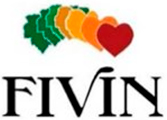
Estudios científicos
alphavbeta3 Integrin-dependent antiangiogenic activity of resveratrol stereoisomers
Abstract:
Angiogenesis is target for antineoplastic and chemopreventive therapies. The natural phytoalexin resveratrol is found in grapes and red wine as cis and trans stereoisomers. trans-Resveratrol shows antiangiogenic activity, but its mechanism of action is not fully elucidated. Recently, trans-resveratrol has been shown to interact with the beta3 integrin subunit, raising the possibility that inhibition of endothelial alphavbeta3 integrin function may concur to its angiosuppressive activity. To get novel insights about the antiangiogenic activity of resveratrol, we compared cis- and trans-resveratrol stereoisomers for their effect on the angiogenesis process and endothelial alphavbeta3 integrin function. trans-Resveratrol inhibits endothelial cell proliferation and the repair of mechanically wounded endothelial cell monolayers. Also, it prevents endothelial cell sprouting in fibrin gel, collagen gel invasion, and morphogenesis on Matrigel. In vivo, trans-resveratrol inhibits vascularization of the chick embryo area vasculosa and murine melanoma B16 tumor growth and neovascularization. In all the assays, cis-resveratrol exerts a limited, if any, effect. In keeping with these observations, trans-resveratrol, but not cis-resveratrol, inhibits alphavbeta3 integrin-dependent endothelial cell adhesion and the recruitment of enhanced green fluorescent protein-tagged beta3 integrin in focal adhesion contacts. In conclusion, stereoisomery affects the antiangiogenic activity of resveratrol, the trans isomer being significantly more potent than the cis isoform. The different antiangiogenic potential of resveratrol stereoisomers is related, at least in part, to their different capacity to affect alphavbeta3 integrin function. This may have profound implications for the design of synthetic antiangiogenic/angiopreventive phytoalexin derivatives.
Comentarios divulgativos:
La angiogénesis es un objetivo en las terapias antineoplásicas y quimiopreventivas. El resveratrol, una fitoalexina natural se encuentra en las uvas y en el vino tinto como estereoisómeros cis y trans. El trans-resveratrol muestra actividad antiangiogénica, pero su mecanismo de acción no es completamente conocido. Recientemente,el trans-resveratrol ha demostrado que interactua con la subunidad de integrina beta3, aumentando la posibilidad de que la inhibición de la función endotelial alphavbeta3 integrina pueda concurrir. Para obtener una amplia perspectiva sobre la actividad antiangiogénica del resveratrol, comparamos estereoisómeros cis y trans-resveratrol por en su efecto sobre el proceso de la angiogénesis y la función endotelial alphavbeta3 integrina. trans-resveratrol inhibe la proliferación de células endoteliales y la reparación de las monocapas de células endoteliales. En todos los ensayos el cis-resveratrol ejerce un efecto limitado o ningún efecto. De acuerdo con estas observaciones, trans resveratrol, pero no el cis-resveratrol, inhibe la adhesión de células endoteliales alphavbeta3 integrina-dependiente. En conclusión, los estereoisómeros afectan a la actividad antiangiogénica del resveratrol, el isómero trans es significativamente más potente que la isoforma cis. El potencial angiogénico de diferentes estereoisómeros del resveratrol está relacionado, al menos en parte, a su diferente capacidad de afectar la función alphavbeta3 integrina. Esto puede tener profundas implicaciones para el diseño de antiangiogénicos.







